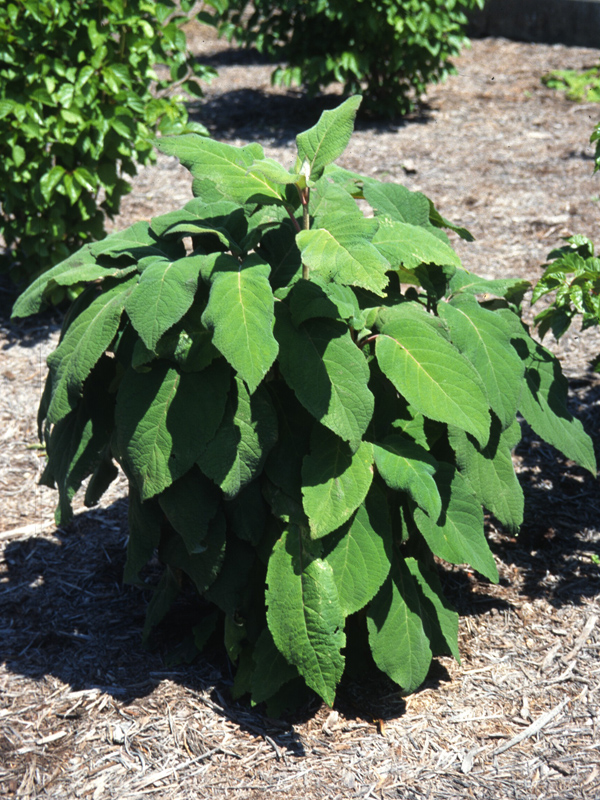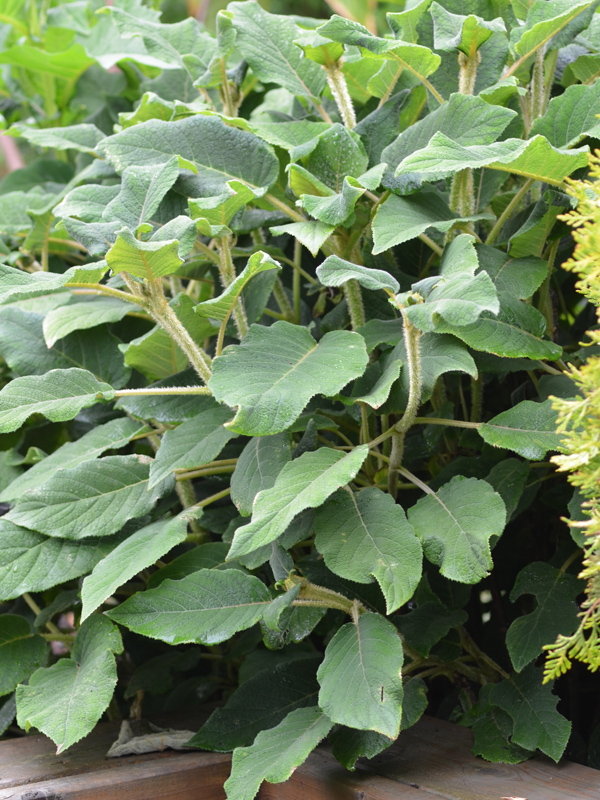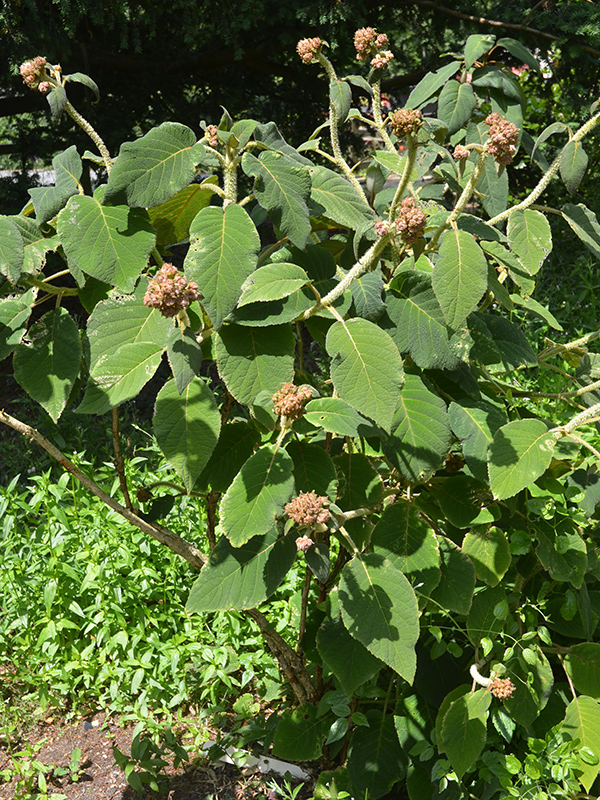
Woody > Hydrangea > Hydrangea aspera > Hydrangea aspera
Hydrangea aspera
Rough-Leaved Hydrangea
Origin: Central China, India, Nepal, Vietnam
| Family |
| Hydrangeaceae |
| Genus |
| Hydrangea |
| Species |
| aspera |
| Category |
| Woody |
| Type |
| Shrub (deciduous) |
| USDA Hardiness Zone |
| 7 |
| Canadian Hardiness Zone |
| 6b - 7a |
| RHS Hardiness Zone |
| H6 - H5 |
| Temperature (°C) |
| -18 - (-12) |
| Temperature (°F) |
| 0 - 10 |
| Height |
| 2.5 - 4 m |
| Spread |
| 1.5 - 2.5 m |
Photographs
Description and Growing Information
Flowering Period
| General Description |
| A deciduous shrub with flat flowering heads that contain a mix of fertile purple flowers and showy white, pink, or purple sterile outer flowers. |
| Landscape |
| Excellent addition to a flower border or flower bed. |
| Cultivation |
| Grow in full sun or partial shade in a moist but well-drained soil. |
| Shape |
| Bushy habit. |
| Pests |
| Watch out for aphids, capsid bug and hydrangea scale (Pulvinaria hydrangeae). |
| Bark/Stem Description |
| Pubescent shoots that become hairless and often peeling. |
| Leaf Description |
| Leaves are softly pubescent, lanceolate, to 25 cm in length, and are dark green above and paler beneath. |
| Flower Description |
| Flowers appear in flat corymbs to 25 cm across with a mixture of small, fertile, purple flowers and showy white, pink, or purple infertile outer flowers. |
| Notable Specimens |
| Arnold Arboretum, Jamaica Plains, Massachusetts, United States of America. , |
| Propagation |
| Propagate by softwood cuttings. |
| Ethnobotanical Uses (Disclaimer) |
| May cause upset stomach if ingested. |




